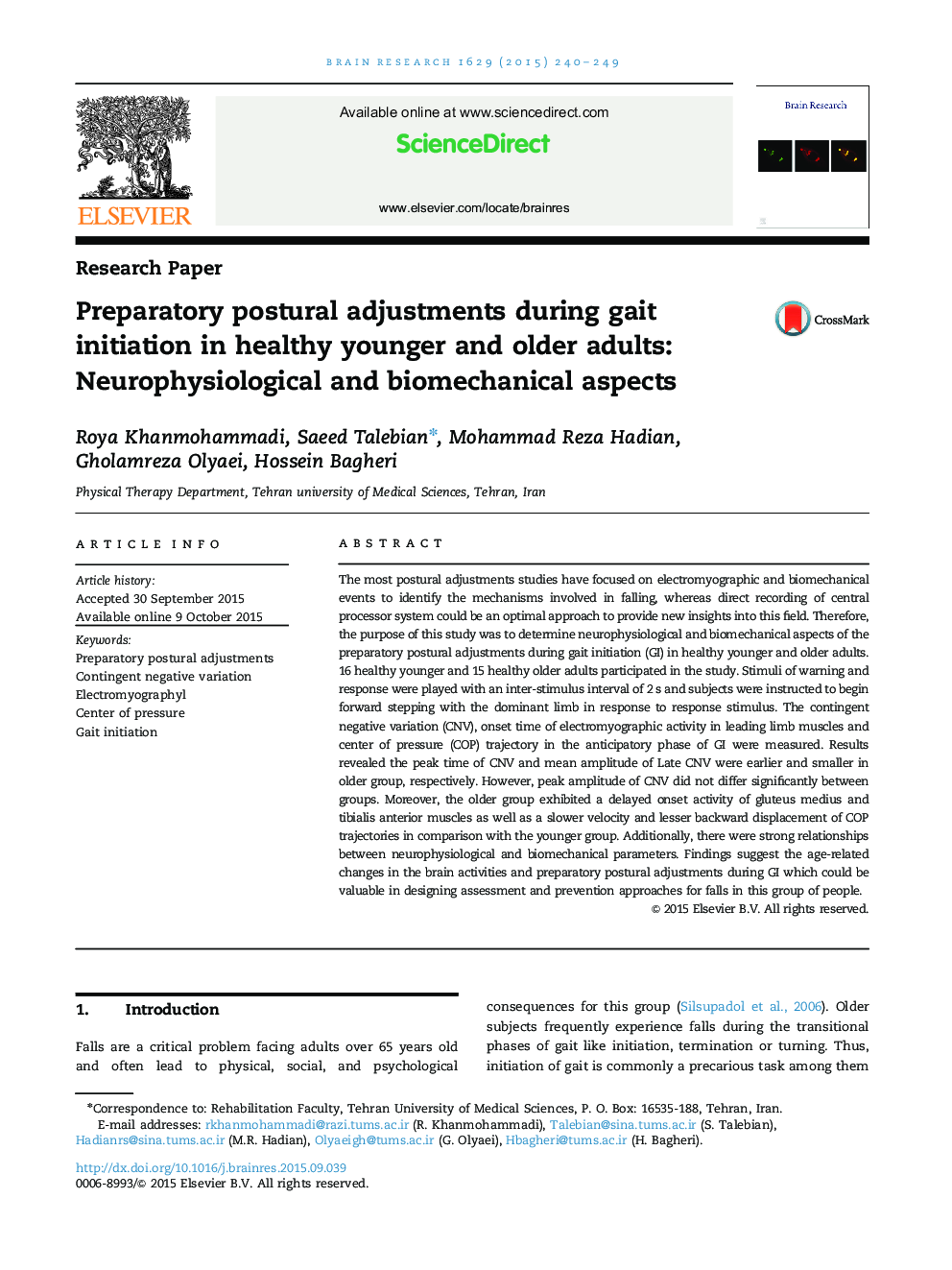| Article ID | Journal | Published Year | Pages | File Type |
|---|---|---|---|---|
| 6262772 | Brain Research | 2015 | 10 Pages |
â¢The motor preparation and cognitive processes are reduced in elders during GI.â¢The mean amplitude of Late CNV in Fz is reduced in elders.â¢The CNV signals reach the peak earlier in elders.â¢The onset activity of GM and TA muscles is delayed in elders.â¢The backward displacement of COP is reduced and slowed in elders.
The most postural adjustments studies have focused on electromyographic and biomechanical events to identify the mechanisms involved in falling, whereas direct recording of central processor system could be an optimal approach to provide new insights into this field. Therefore, the purpose of this study was to determine neurophysiological and biomechanical aspects of the preparatory postural adjustments during gait initiation (GI) in healthy younger and older adults. 16 healthy younger and 15 healthy older adults participated in the study. Stimuli of warning and response were played with an inter-stimulus interval of 2Â s and subjects were instructed to begin forward stepping with the dominant limb in response to response stimulus. The contingent negative variation (CNV), onset time of electromyographic activity in leading limb muscles and center of pressure (COP) trajectory in the anticipatory phase of GI were measured. Results revealed the peak time of CNV and mean amplitude of Late CNV were earlier and smaller in older group, respectively. However, peak amplitude of CNV did not differ significantly between groups. Moreover, the older group exhibited a delayed onset activity of gluteus medius and tibialis anterior muscles as well as a slower velocity and lesser backward displacement of COP trajectories in comparison with the younger group. Additionally, there were strong relationships between neurophysiological and biomechanical parameters. Findings suggest the age-related changes in the brain activities and preparatory postural adjustments during GI which could be valuable in designing assessment and prevention approaches for falls in this group of people.
